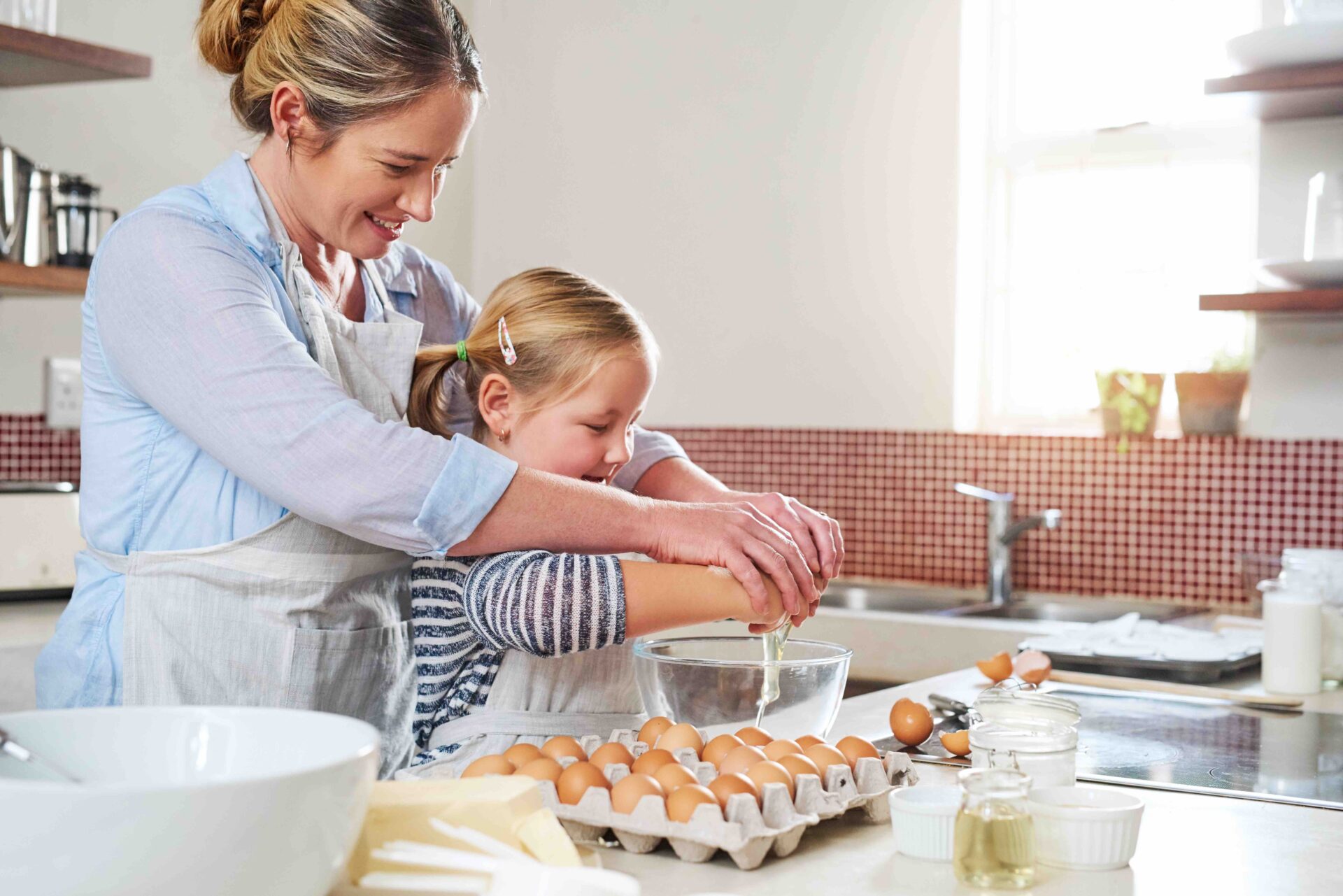sponsored
5 min Read
Egg-citing Ideas to Get Kids Cooking

September 8, 2023
sponsored
5 min Read

September 8, 2023

Canada’s food guide emphasizes that kids learn about food skills and the importance of healthy eating when they are involved in meal planning and preparation. Research has shown that food-related attitudes, preferences and behaviours in kids have been highlighted as characteristics that can be improved by getting kids involved in meal preparation. Your kids can also learn about the importance of washing their hands properly before, during and after preparing food and how to clean up after themselves when the cooking is done.
Eggs make a great starting point for kids to participate in the kitchen! They can be cracked, whisked, separated, boiled, fried and incorporated into many recipes. The possibilities are endless!
Apart from being so versatile in the kitchen, eggs offer health benefits for your kids too, to help them grow up strong and healthy. Eggs are an excellent source of protein, and also contain fat, choline, vitamins A, D, E and B12. Two eggs contain 13 grams of high-quality protein and will help your child stay full, focused and energized throughout the day. Choline will help support your child’s brain development and health.
Did you know that introducing whole eggs early on into your child’s diet can reduce their risk of developing an egg allergy? That’s one of the reasons why the most recent infant feeding recommendations issued by Health Canada, the Canadian Pediatric Society, the Breastfeeding Committee for Canada and Dietitians of Canada advise introducing whole eggs as soon as your baby reaches six months of age or begins eating solid foods. 
Here are some tips to get your children interested in food prep:
At every stage of life, there is a new chance to learn and develop cooking skills. All kids learn at their own pace and it is important to tailor the following suggestions to align with your child’s abilities. Use your instincts—the key is to enjoy your time together in the kitchen, making it a fun and enjoyable experience.
Here are some kid-friendly recipes you can try with your kids:
Always keep an eye on kids when they are using hot or sharp objects, and modify the tasks to fit their age and ability level. The bottom line is, cooking with kids enhances their love of food and nutrition as well as their ability to improve their kitchen skills! For more information and for delicious egg recipes, visit eggs.ca.